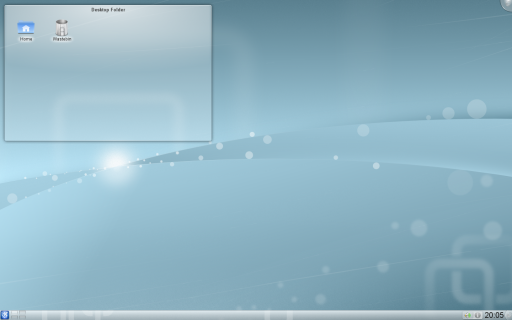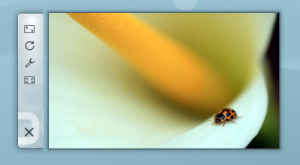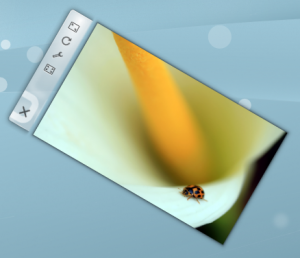Plasma/pt-br: Difference between revisions
MarcusGama (talk | contribs) Created page with "=== Exibição de pasta ===" |
MarcusGama (talk | contribs) Created page with "Como você deve ter notado na imagem acima, não existem ícones colocados diretamente na área de trabalho. Ao invés disso, eles são colocados dentro de um contêiner chamado ..." |
||
| Line 30: | Line 30: | ||
=== Exibição de pasta === | === Exibição de pasta === | ||
Como você deve ter notado na imagem acima, não existem ícones colocados diretamente na área de trabalho. Ao invés disso, eles são colocados dentro de um contêiner chamado "[[Special:myLanguage/Plasma/FolderView|Exibição de pasta]]". Por padrão, a exibição de pasta mostra a pasta Desktop e permite que você arraste arquivos para ela, abra-os, corte, copie, cole, renomeie arquivos e também crie novas pastas e arquivos. | |||
You can have more than one Folder View on the desktop, and they can also be placed in panels. You can set Folder View to show any folder, local or remote, you have access to. Each Folder View can be moved and resized independently to your preference. | You can have more than one Folder View on the desktop, and they can also be placed in panels. You can set Folder View to show any folder, local or remote, you have access to. Each Folder View can be moved and resized independently to your preference. | ||
Revision as of 18:12, 10 October 2010
À primeira vista
Um ambiente de trabalho do Plasma típico se parece com isto:

Os quatro componentes chaves do ambiente de trabalho Plasma são:
- O painel, algumas vezes chamado de "a barra de tarefas", ele fornece espaço para o lançador de aplicativos, a lista de janelas (programas), relógio e bandeja do sistema;
- A área de trabalho, a área onde os widgets e ícones ficam;
- A exibição de pasta, um widget que lista o conteúdo de uma pasta em seu computador, fornecendo acesso rápido a tarefas básicas de gerenciamento de arquivos;
- A caixa de ferramentas do Plasma, que está localizada no canto superior direito da tela bem como no fim do painel. Elas são usadas para acessar a configuração e outras opções de maneira rápida e segura.
Todos estes itens padrão são totalmente configuráveis e podem hospedar uma grande variedade de ferramentas e conteúdos.
Perguntas Frequentes (FAQ) do Ambiente de Trabalho do Plasma =
As "Perguntas Frequentes" (FAQ) para a versão atual do Ambiente de Trabalho do Plasma é mantida nesta página. Ela fornece respostas sucintas às perguntas mais comuns bem como ligações para FAQs de versões mais antigas.
Encontrando seu caminho no Plasma
Você pode usar o Plasma como você usaria um ambiente de trabalho em qualquer outro sistema operacional, acessando o lançador de aplicativos, vendo os programas ativos no momento na barra de tarefas, acessando ícones na bandeja do sistema, e assim por diante.
Uma parte importante do Plasma são os "widgets". Widgets são unidades individuais do ambiente de trabalho e eles incluem (mas não se limitam a) o menu de aplicativos, ícones, a bandeja do sistema, o relógio, etc. Widgets podem existir na área de trabalho em si ou serem inseridos no painel, no protetor de tela ou no dashboard, dentre outros lugares. Widgets existem para uma grande variedade de tarefas além dos mais comuns em uma ambiente de trabalho, incluindo microblogging (Twitter, identi.ca), calculadoras para conversão de unidades, previsões do tempo, compartilhamento de arquivos e muito mais. Painéis e áreas de trabalhos são também tipos especiais de widgets, com a diferença de que podem conter outros widgets.
Como isso se relaciona com o uso do ambiente de trabalho? O Plasma possui algumas novas funcionalidades relacionadas ao uso do ambiente de trabalho. Nós já falamos das caixas de ferramentas do Plasma: por meio delas nós interagimos e personalizamos seu Ambiente Plasma. Clicando em uma delas, um menu será exibido com diversas opções: a partir delas você pode adicionar widgets ao seu painel ou área de trabalho, redimensionar, adicionar ou remover painéis, mudar o papel de parede bem como realizar outras operações.
Exibição de pasta
Como você deve ter notado na imagem acima, não existem ícones colocados diretamente na área de trabalho. Ao invés disso, eles são colocados dentro de um contêiner chamado "Exibição de pasta". Por padrão, a exibição de pasta mostra a pasta Desktop e permite que você arraste arquivos para ela, abra-os, corte, copie, cole, renomeie arquivos e também crie novas pastas e arquivos.
You can have more than one Folder View on the desktop, and they can also be placed in panels. You can set Folder View to show any folder, local or remote, you have access to. Each Folder View can be moved and resized independently to your preference.
Folder View can also be set as the default full-screen desktop background for a more traditional "icons scattered on the desktop" layout. Visit the Folder View page to find out how to do this and much more with Folder View.
Panels

Panels allow you to place widgets around the edges of the screen. These collections of widgets can be configured in various ways, including making them automatically hide when not in use or aligned to certain areas of the screen.
By default, there is one panel at the bottom of the screen, but you can add more panels, move and otherwise configure the default panel and remove panels you no long want. The widgets in all of the panels may also be adjusted to your liking.
For more information on configuring panels in Plasma Desktop and what they are capable of doing for you, visit the Plasma Panels page.
Widgets
Plasma supports widgets written specifically for Plasma (also known as Plasmoids) as well as widgets from other sources such as Google Gadgets, Superkaramba and some Dashboard Widgets from Mac OSX. Additional widgets can easily be found and installed through Get Hot New Stuff.
Widgets that are docked into a panel usually have an Options menu, while those on the desktop have the configuration options within the 'handle', the shaded area which pops up when hovering over the widget. Clicking and holding the mouse on the blank part of the handle will allow you to drag the widget to the desired position.

You have four tools on this handle. The top one is the re-sizer. Click and drag on the tool to resize the widget.
The second tool is a rotate tool. Again, click and hold the tool, while rotating to the desired angle.

The third is the wrench or spanner which allows you to configure that particular widget's settings.
Finally, the fourth tool is the "expanded view" tool and is available only on widgets that support this feature, such as the Picture Frame or Web viewers. When clicked, the Picture Frame widget will, for example, open the currently viewed in an image viewer while the Web Slice widget will open the web page in a full web browser window.
A list of Plasma widgets with their own page can be found here, and some of our favourite widgets are discussed on the Plasma Widgets page
Activities
Use Cases
A user likes web comics so they add their favorite web comics via the comics widget. The user now has a full desktop activity dedicated to their favorite web comics. Now the user is happy with the web comics, but the user now has to go to work, so the user creates a activity with the folder view widgets set to the folders of the projects the user is currently working on. After work the user goes home and works on a side project of writing romance novels. The user always gains inspiration by looking at pictures of the user's significant other. The user now creates a new Activity but now puts pictures frame widgets with pictures of the user's significant other. The user also has a folder view of the romance novel project folder. Now no matter what the user is doing the user has a custom tailored activity to match it.
Go to this blog to read a few tips on using activities.
Widget Layouts and Virtual Desktops
Virtual desktops, the ability to have a separate sets of windows on separate desktops, can tie in with Activities. You can have a different activity on each virtual desktop. In Plasma Desktop 4.4, this can be configured by entering System Settings and navigating to Desktop -> Multiple Desktops, and checking "Different Activity for Each Desktop".
In Plasma Desktop 4.3, You configure this by zooming out and choosing "configure Plasma". Then select "use a different activity on each desktop" and zoom in again.
Hints and Tips
Tweaking Plasma
- Learn how to add a sidebar with clock and news
- Customize your Plasma by mixing multiple Plasma themes
Reloading Plasma
Sometimes you might want to reload Plasma, like right after changing system language so the changes takes effect, or because of a problem with the desktop. To do that, open a terminal and run these commands:
kquitapp plasma-desktop plasma-desktop
Further information
- The Plasma FAQ
- Plasma HowTo - short screencasts
- Glossary
- Some of our favourite plamoids - why not add yours?
- Here's how to install more Plasmas widgets
- Learn the versatility of KRunner
| Back to the Introduction page |
